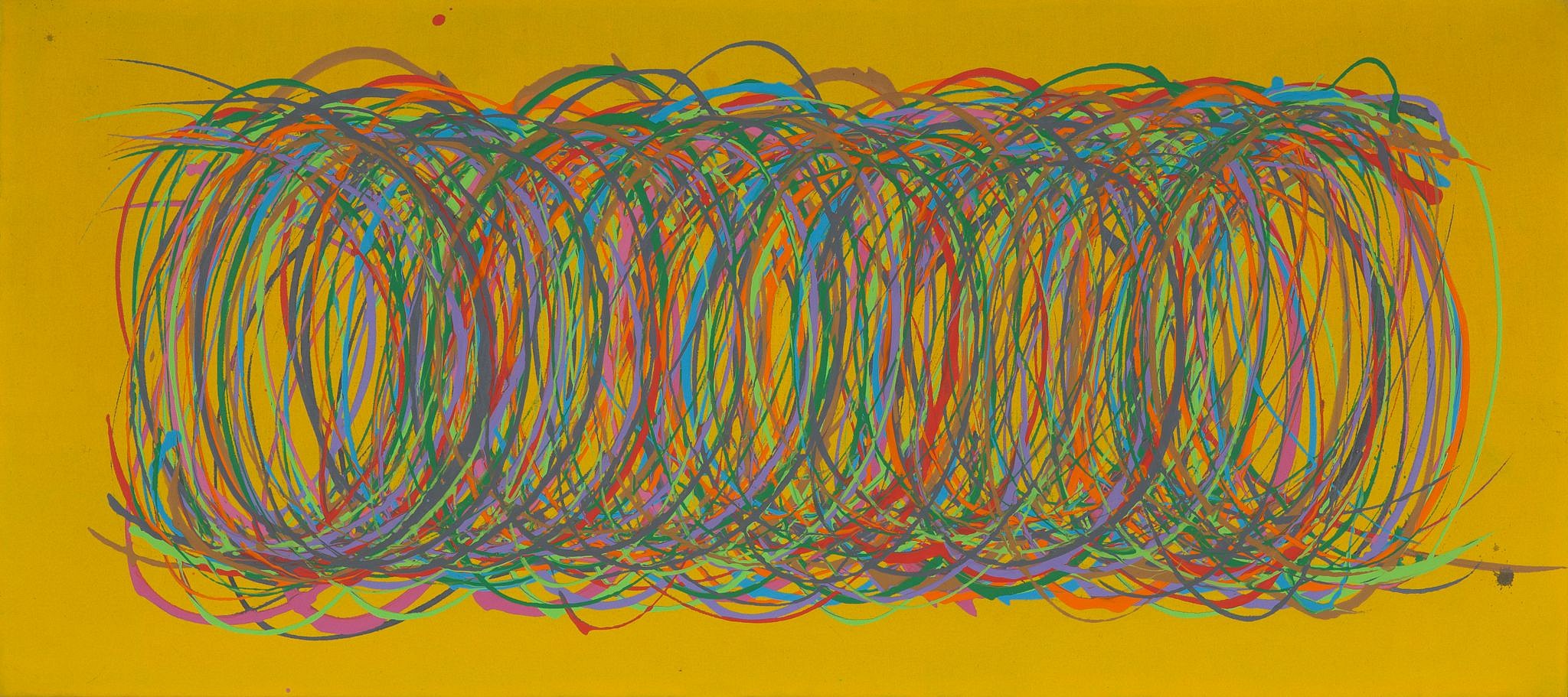Info

Dan Christensen | Forty Years of Painting
Sep 17 – Oct 17, 2015
CLICK ABOVE IMAGE TO READ 2015 DAN CHRISTENSEN CATALOGUE ONLINE
NEW YORK, NEW YORK, August 26, 2015 – Berry Campbell is pleased to open its fall season with a retrospective by renowned Color Field painter, Dan Christensen (1942-2007). Christensen’s relentless experimentation with new tools and materials made him among the most ambitious abstract and gestural artists of his time. This important exhibition will feature more than twenty paintings from various periods of his forty year career: rare “early spray” paintings from the late 1960s, saturated stained canvases from the 1970s, dizzying spray ovals from the 1980s, pulsating orbs from the 1990s, and rhythmic calligraphic swirls from his last decade. Several paintings have never been on public view. Berry Campbell will present the retrospective in a sixteen-page catalogue featuring a poem written as a tribute for Christensen by Billy Collins, the former Poet Laureate of the United States and Christensen’s close friend.
Dan Christensen was born in Cozad, Nebraska in 1942. Seeing the work of Jackson Pollock on a trip to Denver as a teenager motivated him to become an artist. He pursued this aim at the Kansas City Art Institute, Missouri, where he received his Bachelor of Fine Arts. After moving to New York in 1964, he quickly rose to fame, as among a group of young artists who were reviving painting during a time that minimalism was prevalent. His art was championed by important curators, critics, and art dealers like Dick Bellamy and André Emmerich, and he immediately joined the ranks of other well-known Color Field painters like Kenneth Noland, Jules Olitski and Larry Poons as his work was placed in major museums. Christensen first gained renown for his spray loop paintings from the late 1960s, in which he used the spray gun to create repeating calligraphic circles, producing shimmering allover surface effects. His work progressed in several directions, including his plaids, in which he used rollers and squeegees to “get more paint down on the canvas,” resulting in tighter compositions that at the same time had an improvisational quality as their compositions were determined in the artist’s “editing” phase. In another series, he used sticks and brush ends to cut into thick acrylic strata, abrading his surfaces to let colorful under layers emerge. In the 1980s, he returned to the loop, using color sprays to create blurred circles and evanescent mandala-like lozenges.
Christensen conjoined his thematic issues in the mid-1990s, creating orbs of colors that seem to melt as well as move through fluorescent and celestial atmospheres, their shifting lines implying the Pythagorean harmony of the spheres as well as atomic energy and matter. Christensen continued to create works of heightened brilliance and intensity until his early death in 2007. In a 2007 review for Art in America, Karen Wilkin remarks on the late works, “[T]hey sum up everything that came before, while announcing new variations on continuing themes. It’s as if the artist had made the thrifty decision to review his own past and deepen his investigations of ideas not yet exhausted.”
Christensen received a National Endowment Grant in 1968 and a Guggenheim Fellowship in 1969. However, it is only recently that his multifaceted oeuvre has received the widespread attention it has long deserved. The traveling retrospective, Dan Christensen: Forty Years of Painting, organized by the Kemper Museum of Contemporary Art (Kansas City, Missouri) in 2009, helped make a convincing case for a heightened appreciation of Christensen’s work and his significant place in postwar abstraction. As noted in a review in Artforum of his Kemper show, the critic Peter Plagens observed that with his gutsy combination of elements, Christensen arrived “at some sort of visual poetry.” In the summer of 2015, Gagosian Gallery in London included the 1968 masterpiece, Pavo, in their exhibition,“Sprayed,” featuring works by Jean-Michel Basquiat, John Chamberlain, Jules Olitski, David Smith, and Christopher Wool.
His paintings are held in over thirty museum collections, including the Albright-Knox Gallery, Buffalo, New York; the Fine Arts Museums of San Francisco; the Metropolitan Museum of Art, New York; the Museum of Modern Art, New York; the Seattle Art Museum; the Solomon R. Guggenheim Museum, New York; the Whitney Museum of American Art, New York; and many others.
Berry Campbell continues to fill an important gap in the downtown art world, showcasing the work of prominent and mid-career artists in the modernist tradition. The owners, Christine Berry and Martha Campbell, share a curatorial vision of bringing new attention to the works of a selection of postwar and contemporary artists and revealing how these artists have advanced ideas and lessons in powerful and new directions. Other artists and estates represented by the gallery are Edward Avedisian, Walter Darby Bannard, Stanley Boxer, Eric Dever, Perle Fine, Balcomb Greene, Gertrude Greene, John Goodyear, Ken Greenleaf, Raymond Hendler, Jill Nathanson, Stephen Pace, Charlotte Park, William Perehudoff, Ann Purcell, Albert Stadler, Mike Solomon, Syd Solomon, Susan Vecsey, James Walsh, and Joyce Weinstein.
Berry Campbell Gallery is located in the heart of the Chelsea Arts District at 530 West 24th Street, Ground Floor, New York, NY 10011. www.berrycampbell.com. For information, please contact Christine Berry or Martha Campbell at 212.924.2178 or info@berrycampbell.com.
###
